On One Wheel: Navigating the Unicycle Universe with Expertise
Explore the world of unicycles with this comprehensive guide covering their history, types, and essential features. Unicycles, born in the 19th century, come in various forms such as standard, mountain, freestyle, and distance unicycles. Learn to choose the right one, practice safety measures, and master basic to advanced riding techniques. Unicycles aren't just for recreation—they've evolved for commuting, fitness, and entertaining performances. Discover the components like the wheel, frame, pedals, and more that make unicycles unique and challenging. Whether you're a beginner seeking new challenges or an experienced rider, this guide unveils the joy and versatility of one-wheeled adventures.
Unleashing the Joy of Unicycling: A Comprehensive Exploration
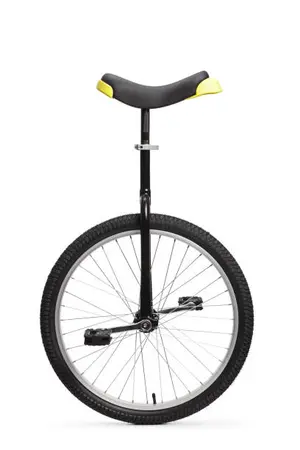
Unicycling, with its quirky charm and unique appeal, has captured the hearts of enthusiasts worldwide. While it may seem like an unconventional choice compared to traditional bicycles, the unicycle has its own set of challenges and rewards.
The History of Unicycles
The origin of the unicycle can be traced back to the early 19th century when inventors sought to create an even more challenging version of the bicycle. The unicycle's precursor, the "penny-farthing," featured a large front wheel and a smaller rear wheel. As technology advanced, inventors began experimenting with single-wheeled designs, leading to the birth of the modern unicycle.
Features and Components of Unicycle
A unicycle is a simple yet fascinating piece of equipment, consisting of several key features and components that collectively enable the rider to navigate on a single wheel. Let's explore the essential features and components of a unicycle:
1. Wheel:
- The central and most prominent component of a unicycle is the wheel.
- Available in various sizes, with smaller wheels providing greater maneuverability and larger wheels offering more stability and speed.
- The wheel is typically constructed with a durable rim, spokes for support, and a pneumatic tire for traction.
2. Frame:
- The frame is the structural backbone of the unicycle, connecting the wheel to the seat.
- It is commonly made of steel, aluminum, or other lightweight and sturdy materials.
- Frames can have different shapes and designs, depending on the type of unicycle.
3. Seat (Saddle):
- The seat, or saddle, is where the rider sits while operating the unicycle.
- Unicycle seats vary in design, with some featuring additional padding or ergonomic shapes for comfort.
- The height of the seat is adjustable to accommodate riders of different sizes.
4. Seatpost:
- The seatpost is a vertical tube that connects the seat to the frame.
- It allows for height adjustment to ensure proper leg extension while riding.
- The seatpost is typically secured with a clamp to prevent slippage during use.
5. Pedals:
- Pedals are attached to the wheel's axle and provide a platform for the rider's feet.
- Unicycle pedals come in various designs, including flat pedals or pedals with built-in grips for better foot stability.
- Some advanced unicycles may have pedals with additional features, such as metal pins for enhanced grip.
6. Cranks:
- Cranks are the arms that connect the pedals to the wheel's axle.
- Longer cranks provide more leverage and control, making them suitable for beginners, while shorter cranks offer increased speed and are favored by experienced riders.
7. Hub:
- The hub is the central component connecting the wheel to the axle.
- It is crucial for maintaining the integrity and alignment of the wheel.
- Some unicycles, especially those designed for off-road use, may have reinforced hubs for increased durability.
8. Bearings:
- Bearings are located within the hub and facilitate the smooth rotation of the wheel.
- High-quality bearings contribute to a smoother ride and improved overall performance.
9. Gearing (optional):
- Some advanced unicycles, such as geared unicycles, may feature a transmission system that allows riders to change the gear ratio.
- Geared unicycles enable faster speeds and greater efficiency, especially on flat or downhill terrain.
Types of Unicycles
Standard Unicycle:
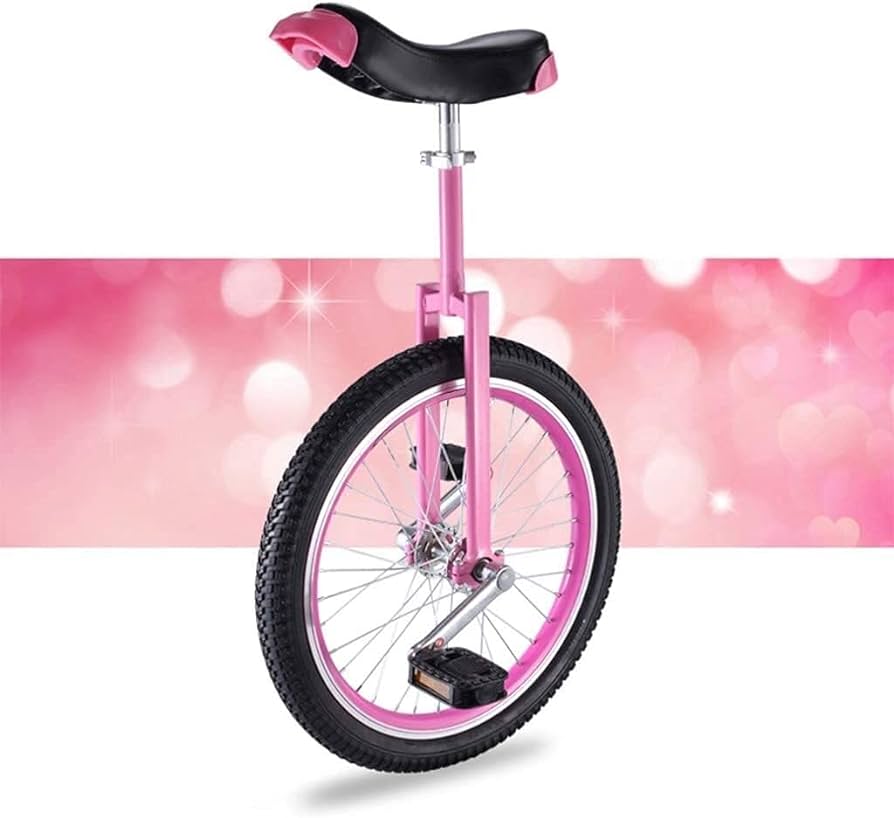
- Features a single wheel and a seatpost with a saddle.
- Ideal for beginners and general riding.
Mountain Unicycle (Muni):
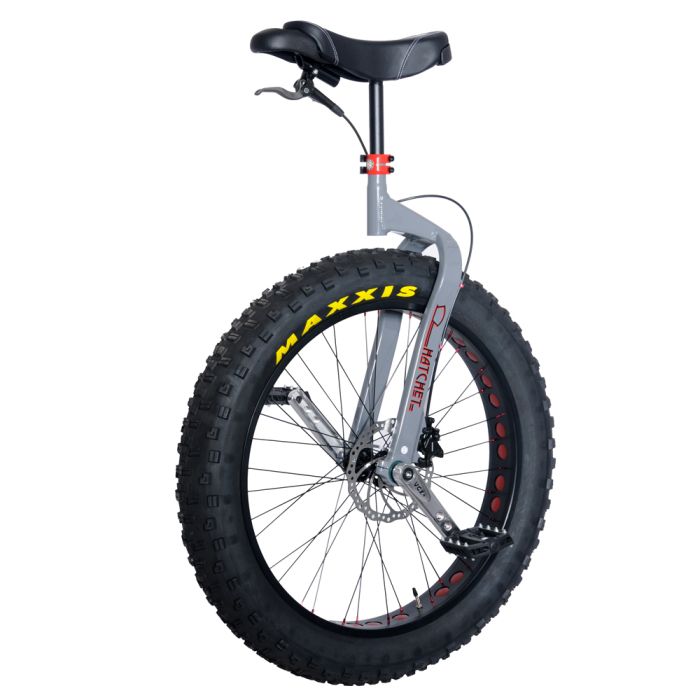
- Equipped with a larger wheel and sturdy construction.
- Designed for off-road terrain, providing a rugged and adventurous experience.
Freestyle Unicycle:
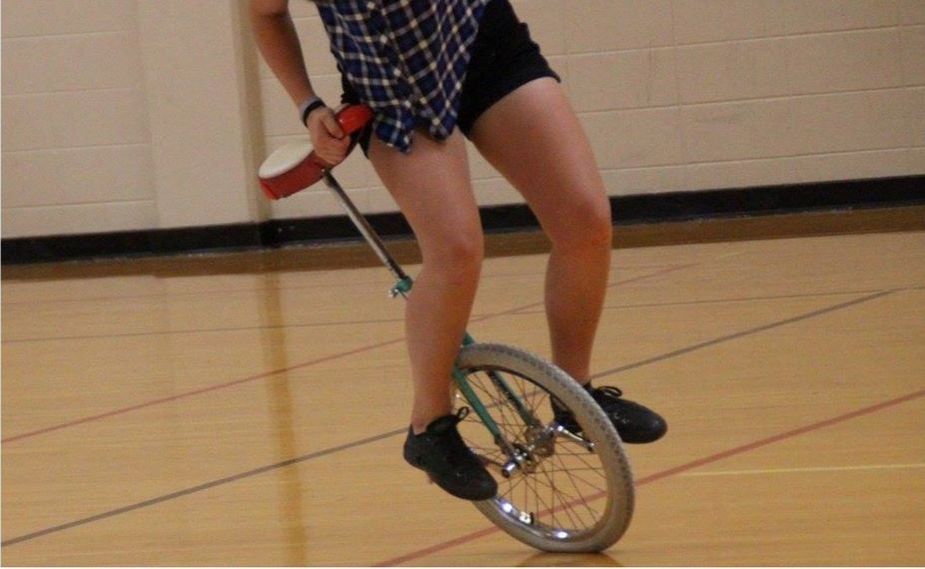
- Lighter and more maneuverable than standard unicycles.
- Suited for tricks, stunts, and artistic performances.
Distance Unicycle:

- Designed for covering long distances efficiently.
- Typically features a larger wheel for increased speed.
Giraffe Unicycle:
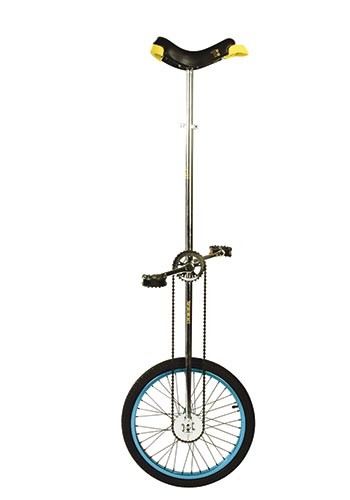
- Unicycles with an extended frame and chain drive.
- Allows riders to sit at a greater height, adding a theatrical element to performances.
Getting Started with Unicycling
Choosing the Right Unicycle:
- Consider your skill level, intended use, and personal preferences.
- Consult with experienced riders or experts to ensure you select the appropriate type and size.
Safety Gear:
- Always wear protective gear, including a helmet, knee and elbow pads.
- Gloves can provide better grip and protect your hands during falls.
Basic Riding Techniques:
- Start by learning to mount and dismount the unicycle.
- Practice riding in a straight line before attempting turns.
Advanced Skills and Tricks
Idling:
- The ability to stay in one place by rocking back and forth.
- Enhances balance and control.
Hopping:
- Lifting the unicycle off the ground.
- Useful for overcoming obstacles and navigating uneven terrain.
Wheel Walking:
- Walking or running while the unicycle is in motion.
- Requires advanced balance and coordination.
Maintenance and Care
1. Regular Inspections:
- Check for loose bolts, proper tire pressure, and any signs of wear.
- Lubricate moving parts to ensure smooth operation.
2. Tire Maintenance:
- Monitor tire wear and replace it when necessary.
- Maintain the appropriate tire pressure for optimal performance.
FAQ
- Are unicycles hard to ride?
- Why is it called a unicycle?
- What is unicycle good for?
- Why do people use unicycles?
Are unicycles hard to ride?
- Yes, unicycles can be challenging for beginners. Learning to ride a unicycle requires a combination of balance, coordination, and muscle control. The lack of a second wheel makes it inherently less stable than bicycles. However, with patience, practice, and proper instruction, many people can become proficient unicyclists.
Why is it called a unicycle?
- The term "unicycle" is derived from the Latin prefix "uni," meaning one, and the word "cycle," referring to a wheel or a circular object. Therefore, a unicycle is a vehicle with a single wheel. The name accurately describes the defining characteristic of this mode of transportation: the presence of only one wheel.
What is a unicycle good for?
Unicycles serve various purposes and activities, making them versatile despite their unconventional design. Some common uses include:
- Recreation: Riding a unicycle can be a fun and engaging recreational activity, providing a unique challenge and a sense of accomplishment.
- Performance and Entertainment: Unicycles are used in circus acts, street performances, and shows, showcasing the rider's skill and balance.
- Fitness: Unicycling engages core muscles, improves balance, and enhances overall fitness. It can be an effective and enjoyable way to stay active.
- Commuting: While less common than bicycles, some individuals use unicycles for short-distance commuting, especially in urban areas with limited space for storage.
Why do people use unicycles?
People use unicycles for a variety of reasons, including:
- Personal Challenge: Many are drawn to unicycling as a unique and challenging skill to master. The sense of accomplishment that comes with successfully riding a unicycle is a significant motivator.
- Entertainment: Unicycles are often used for entertaining performances in circuses, street shows, and other events. The skill and precision demonstrated by unicyclists captivate audiences.
- Physical Fitness: Riding a unicycle engages core muscles, improves balance, and enhances overall physical fitness. It provides a different and enjoyable way to stay active.
- Community and Social Activities: Unicycling communities exist worldwide, and enthusiasts often come together for group rides, events, and competitions. The shared passion for unicycling fosters a sense of camaraderie among riders.
Unicycling is more than just a recreational activity; it's a skill that challenges both the body and mind. From its intriguing history to the diverse types of unicycles available, this guide provides a comprehensive overview for anyone looking to embark on the journey of one-wheeled adventure. So, whether you're a curious beginner or an experienced rider seeking new challenges, hop on your unicycle and experience the joy of this unique and exhilarating mode of transportation.



